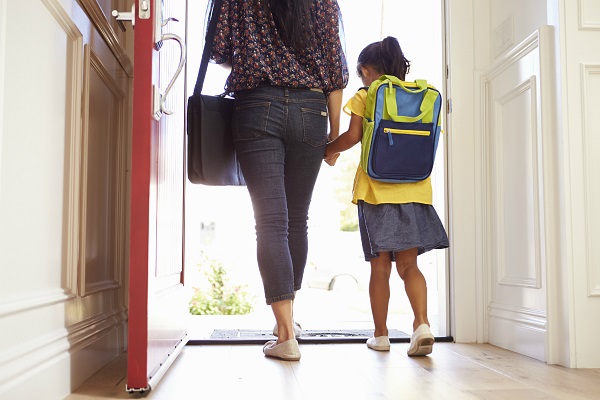Families who created education pods for their students during the COVID-19 pandemic preferred them to what was being offered in schools prior to the public health crisis, according to Center on Reinventing Public Education report “Crisis Breeds Innovation: Pandemic Pods and the Future of Education.”
Released in February 2022, the report provides an in-depth look at the experiences families and educators had with pods based on a national survey of 152 parents and 101 instructors representing 33 states. The survey was conducted in February 2021 with follow-up interviews of 62 survey respondents taking place that spring.
After the onset of the pandemic disrupted classrooms across the country in spring 2020, parents had to figure out how to best support their children academically and emotionally. Pandemic pods were one solution.
“They brought together small groups of students and enlisted adults — either hired instructors or groups of parent volunteers — to supervise students and support their learning,” the report’s authors stated. “These efforts were born of necessity, but because they formed on the margins of the rules that typically govern how schooling works, families and educators gained a historic opportunity to remake learning based on their own visions.”
On average, the pods cost $306 a week. There was an average of six students per pod and 80 percent of youth involved were ages 8 and under. Eighty percent of the pods were organized by participating families and 69 percent gave a minimum of six hours of supervision. Forty-nine percent of the pods met five days per week.
Among key survey findings among families was the perception that pods encouraged a more student-centered learning environment than traditional schooling. Additionally, more than two-thirds of families reported a minimum of one tangible benefit for their child. Pods also gave families more information and influence over their student’s learning.
Respondents who participated in pods that relied heavily on remote instruction were not as satisfied with their experience as those families who did and pod learning brought families closer, mostly for better but sometimes for worse. Finally, though most families formed pods with like-minded folks, some did attempt to increase diversity and inclusion.
Among educators, respondents felt pods drew on diverse backgrounds and skill sets, allowed them more freedom in their teaching and chances to have closer relationships with students. Instructors saw pods as a career opportunity, but compared to a more traditional school setting, said it was challenging to have less support and collaboration.
Though almost half of the instructors surveyed were teaching immediately before the pandemic, the rest worked in positions such as tutors, child care providers, paraprofessionals or were retired teachers.
In parent-run pods, some made good use of their professional and artistic skills via project-based learning. A pod based in California had students build a treehouse in a family’s backyard as parents had backgrounds in architecture, carpentry and woodworking. “We decided that as parents, we wanted to all be involved so we just utilized all of us and then sought outside help where we needed help,” one of the parents quoted in the report explained.
The future of pods
Researchers found that most families and instructors interviewed didn’t anticipate continuing their pod experiences after the 2020–21 academic year. For families, it came down to regaining access to academic support, special education services and other expanded learning opportunities as well as more socialization for their children. Some were not happy about returning to traditional school settings but couldn’t continue in a pod for financial or logistical reasons.
For instructors, they could not foresee enough support to indefinitely teach a pod.
“While pandemic pods have been both hailed as creative solutions that will disrupt American education and critiqued as niche arrangements that may widen inequality, our findings suggest something more nuanced,” the report’s authors said. “Families and instructors both benefited from intimate learning environments flexible enough to meet the individual needs of each student. Most of them wanted more of it. But their interest wasn’t enough to overcome the challenges that came with operating off the grid. In the end, most pods only live on as beloved memories.”
Those who experienced pods, however, can’t unsee their benefits, the report found, and local educational agencies, schools and state policymakers should find ways to incorporate key lessons from pods into the K-12 system.
“Pods demonstrated a knack for forging deeper relationships, building community, personalizing instruction to meet student needs, providing flexibility, drawing in people with diverse talents and skill sets, increasing teachers’ professional freedom, and creating joy,” the authors stated. “But those seeking to sustain these benefits post-pandemic through pods, micro schools, or school and district innovation must make systemic investments that address the challenges to accessibility, connectedness, and sustainability that ultimately brought most pods to an end. Doing so may well yield breakthroughs to some of the thorniest issues plaguing public schools today.”
For those still choosing to opt out of the traditional education system, the report recommends that state and local policymakers strengthen support for families and educators by having targeted resources available for low-income families, allowing families outside of the system to tap into schools’ resources and addressing regulatory gray areas.
To help families and educators both inside and outside the traditional system thrive and further innovation and infrastructure supports, funders can consider investing in new models for learning inside and outside the system, seed infrastructure supports to address barriers for families and educators outside the system and scale research investments to learn from successes and failures.




